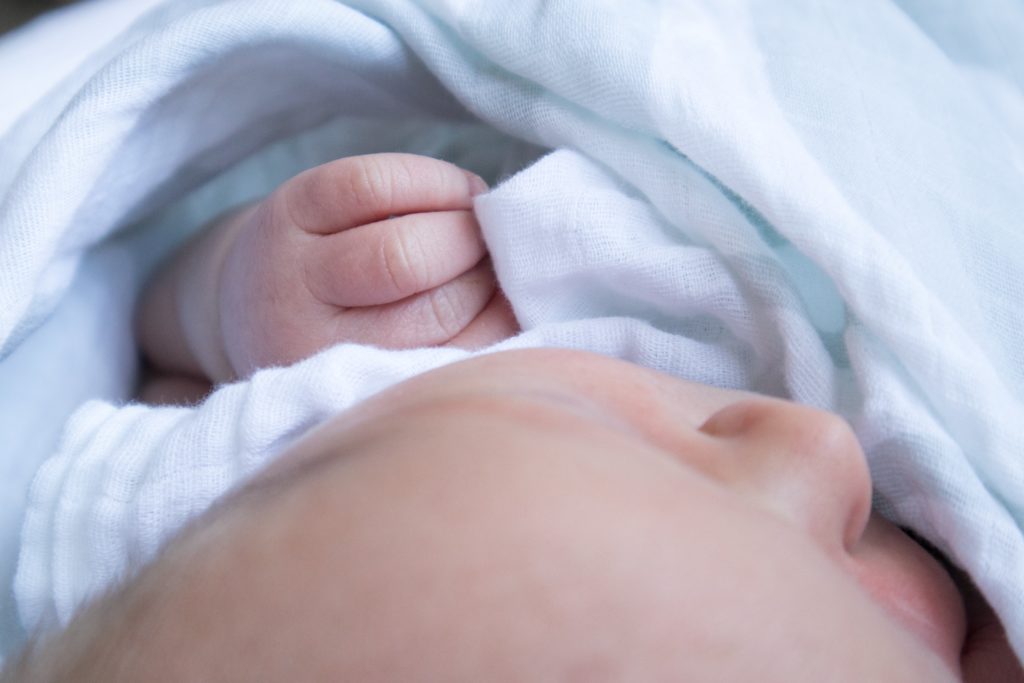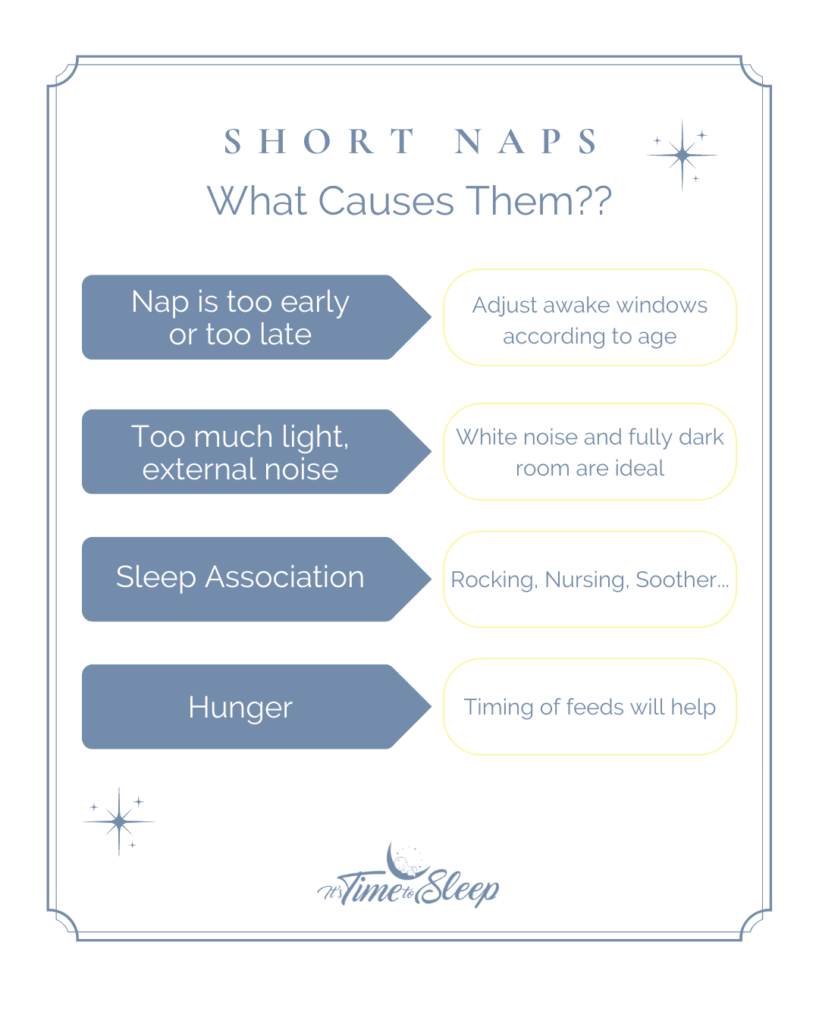4 Reasons for Short Naps

By around 4 months old, your baby should be able to be on a more structured schedule. Not only can they be on a 12-hour sleep schedule, but they will also be developing self-soothing skills. At 4 months, the goal is for baby to be taking 3-4 naps in the day, and sleeping for 10-12 hours at night. The short naps a newborn takes, are now going to transition to longer, more restful naps, around 1.5-2 hours long.
What is a short nap?
A short nap is any nap less than 1 hour. A typical sleep cycle is around 45 minutes, a nap less than one hour isn’t a restful nap for a baby.
Something to keep in mind when trying to get to the bottom of a short nap, is the initial response to a waking. The first thing you should do is to pause and listen. This is the babies opportunity to connect sleep cycles. Rushing in to see them may make it hard to get them back to sleep.
If your baby is crying hysterically, definitely go to them. Try to soothe them in their bed before picking them up.
If baby wakes up and is not crying, wait and see if they will go back to sleep. This is a safe way for baby to find rest, and to learn soothing skills. Stretching out this time to be at least 1 hour from when the nap started to when you go to get them is a good way to ensure that baby is rested. Read more about when and how to start sleep training.
What causes short naps?
Nap is too early or too late
Building up the baby’s sleep pressure is key to having them be tired enough to sleep. The most efficient way to do this is to keep track of awake windows. An awake window starts as soon as you take baby out of the crib after a nap. Its length is determined by how long the nap was, and sleepy cues. When babies are just learning to regulate their sleep, they can seem tired earlier than recommended, and they can also miss targets. I’ll be writing a blog post all about awake windows soon, so follow me on instagram for updates!

When your baby is going down for naps when they are tired, that is the optimal time. They are more likely to stretch the nap longer, and connect sleep cycles. If your baby is going down for naps too late, their body may have gained a second wind. It will be much harder for them to want to sleep for very long.
Sleep Environment
Two of my favorite sleep aids are black out shades and a white noise machine. They are essential to helping your baby fall asleep and stay asleep.
A dark room promotes the body to produce melatonin, the sleep hormone. Markedly, when a baby wakes naturally from a sleep cycle, you want the room dark to avoid over-stimulation.
Having white noise in the room is meant to mask outside noise from disrupting your baby’s sleep. You will want to make sure it’s not over 60 decibels, and that it’s not right next to the baby’s crib.
A dark room and white noise are not sleep props, or sleep associations. They are tools that help to provide the most restful sleep, and are scientifically proven to improve sleep, from babies to adults. Which brings me to my next topic:
Sleep Associations
Firstly, a sleep association, or sleep prop, is something that is putting baby to sleep. Such as, nursing, rocking, a pacifier, anything that a baby is using to fully fall asleep without using any self-soothing skills.
Sleep associations are not negative. They only cause issues if your baby simply can not fall asleep without them, and they need help to get the association. Generally, if it’s not something that is reasonably a long term option for sleep, then there really should be an effort made to teach self-soothing, instead of having the sleep prop. This will help when your baby wakes naturally, and is able to put themselves back to sleep.
Hunger
Especially in newborns, but it certainly goes for all ages, having enough food in their belly really goes a long way with naps. At 4 months, there should be less feeding on demand, and more structure to the feeding schedule. A baby in the first year of life should be eating a full feed every 2.5-3/3.5 hours. It’s also a good idea to space the feedings out so that they can work with the awake windows. So, if your baby woke up at 7am, they would eat first and then need to eat again at around 10am. With a 1.5 hour awake window, that would mean they would need to nap at 8:30am and would hopefully be able to sleep until 10am. If your baby is prone to having short naps, the awake window would need to be a bit shorter and can throw off feeding schedules.
I’m here to help!
Short naps are a major challenge, I know because I have been there with my own babies. They tend to feel harder because it’s all so new. You’ve just had a baby, you haven’t slept a full night in months, and now you can’t try to find a “normal” routine because the baby is not sleeping during the day anymore. I can help! In fact, I would love to help. I offer one on one, individual support. Reading blog post after blog post can be overwhelming, I can package information specific to your needs. And give you clear and simple tools to get baby, and you, sleeping again.
Please schedule a free 20 minute discovery call.
Happy napping!!
CATEGORY
9/08/2022

COMMENTs